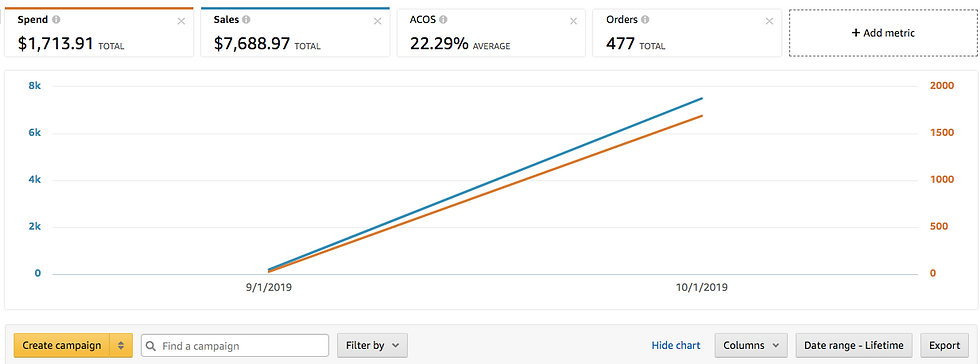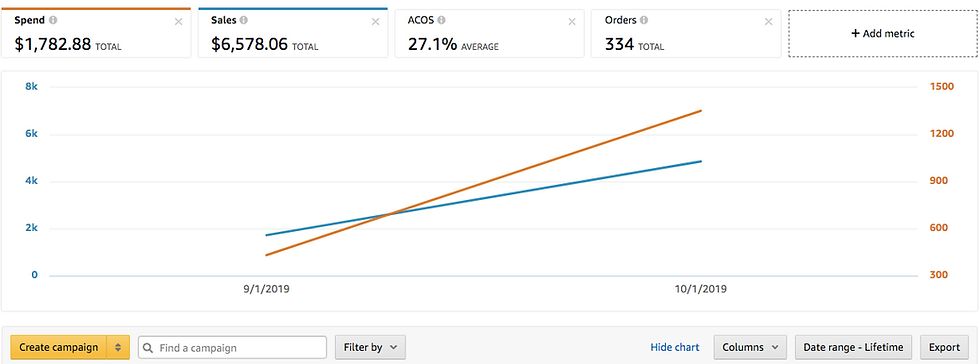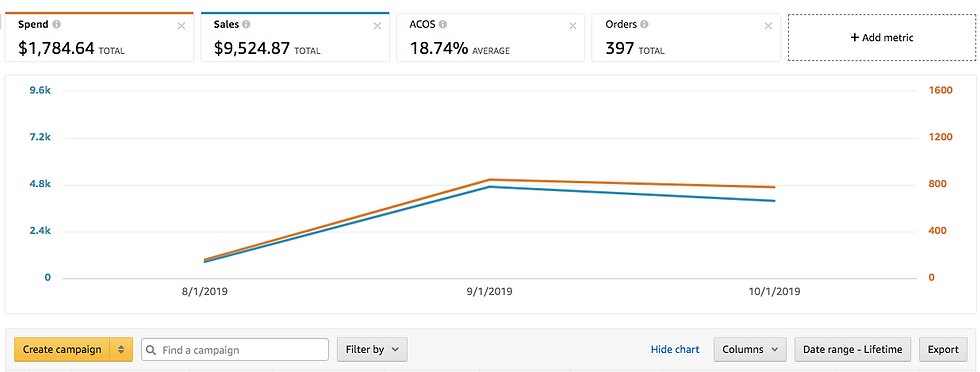Using Amazon PPC To Launch Products
- Carlos Fabrega

- Oct 23, 2019
- 3 min read
Is using PPC to launch products still effective?
Yes, very.
These screenshots are of four different products I’ve launched for clients in August/September time frame.




So what made these product launches successful?
The first key comes way before the client decides to work with me. That is market research, product selection, setting up the listing for success and having a budget to launch.
Of course the lower the competition in your niche and the more you can differentiate your product from the competition the higher chance of success you have.
Next setting up your listing for success includes writing a compelling and keyword rich title, bullets and description. Using high quality images and including things like info graphics and images where the customer can easily determine your value proposition.
Don’t try to save a buck when setting up your listing. Using budget services you will typically get what you pay for. This is a one time investment that if done properly the first time will pay dividends for years to come. If you cut corners here you will 100% pay the price when it comes to launch time and you will end up having to pay the time and money you saved initially to fix it.
Lastly, the most important when it comes to PPC is actually having a budget in place to dedicate to the launch and spend on testing in PPC. Using PPC to launch and rank requires investing money in ads. The more competitive the niche the more budget you will need. So when picking a product or niche make sure you are taking into account PPC when making your budget. You don't want to get to launch time and realize you have no money to run ads.
So what about keyword research and campaign structure?
Here are my top sources for initial keyword research:
Suggested keywords (Now Related Keywords): Pull these out of campaign manager and run through the list. It will give you a good idea of what Amazon currently thinks of your product. From here you will be able to pull several highly relevant and unique keywords for your product.
Helium 10 Cerebro: This is an excellent tool for running reverse ASIN’s on competitors. I suggest running reverse ASIN on at least 3 competitors. One top competitor (BSR <2000) one medium competitor (BSR <10,000 but >5000) and one low competitor (BSR >15,000). Export the keywords to excel and filter them by rank. Look at keywords these competitors are ranking for in the top 1-10 spots. Out of these keywords what seem highly relevant to your product?
Your own existing data: Are you launching a new product similar to an existing product you are selling? Pull your customer search term report and check out what you are converting for your existing product.
You should now have a pretty substantial list of keywords.
Keep the list of keywords separated by source. So your suggested keywords should be separate from your Cerebro keywords which are also separate from your existing data keywords. You will need to deduplicate these keywords to assure there are no duplicate keywords amongst these lists.
Now looking at these three buckets pull your top 20-30 keywords that you believe are the absolute most relevant to your product. These will go into their own campaigns and can use a more aggressive bid/budget.
Your left over keywords are for testing and should have each bucket go into their own unique campaigns and apply moderate/conservative bids to test.
As for campaign structure:
Only have one SKU advertised per ad group (preferably 1 per campaign).
Only have one keyword match type per ad group (preferably 1 per campaign)
Use historic bid data as reference for starting bids. If you have no history from existing products then use suggested bid ranges as a guide.
Hopefully you have found this article helpful and took something away from it. Best of luck and happy launching!



Comments